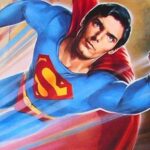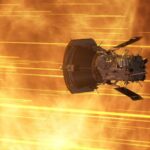Floating in a microgravity environment that’s 250 miles above Earth’s surface hasn’t spared Suni Williams from inappropriate comments about her body, forcing the NASA astronaut to issue a public statement on her weight.
In response to tabloid reports that raised concern over the astronaut’s appearance, Williams reiterated that she is in good health and has maintained the same weight since boarding the International Space Station (ISS) in June. Although the rumors surrounding Williams stemmed from her extended stay on the space station, the line of questioning reiterated the media’s focus on the appearance of women astronauts and the assumption that women have a harder time in space.
This morning, @Astro_Suni spoke with @NESN about her stay aboard the @Space_Station, her love of Boston sports, and staying fit and active. She also addressed rumors about her health during her mission. https://t.co/E4TLpLjpPD
— NASA Astronauts (@NASA_Astronauts) November 12, 2024
Williams, along with NASA astronaut Butch Wilmore, launched to the ISS on June 5, riding on board Boeing’s Starliner for the first crewed test flight of the spacecraft. The spacecraft remained docked to the space station for three months as teams on the ground debated whether or not it was safe to return the crew on board Starliner. During its trip to the ISS, five of the spacecraft’s thrusters failed and the spacecraft developed five helium leaks, one of which was identified prior to liftoff, forcing NASA to ultimately decide to return an uncrewed Starliner and bring back its crew on board SpaceX’s Dragon spacecraft.
That, however, meant that Williams and Wilmore, who had originally planned on staying on board the ISS for about eight days, would end up spending eight months in space. Naturally, the story of the stranded astronauts drew the attention of the media.
A recent photo of Williams sparked headlines in The New York Post and The Daily Mail that speculated over the astronaut’s health, suggesting that she had lost weight and describing her appearance as “gaunt.”
“I’m the same weight that I was when I got up here,” Williams said during a recent interview with the New England Sports Network. The astronaut added that she had been working out on board the ISS, riding an exercise bike and lifting weights, which may have slightly changed her body.
NASA insisted stranded astronaut Sunita Williams is safe & healthy amid growing public concern for her health
The photo showed her looking ‘gaunt’, suggesting she had lost a significant amount of weight after spending more than 150 days stuck on the International Space Station. pic.twitter.com/vFEEkfVgDK
— AstroNana (@ImAstroNana) November 9, 2024
“I could definitely tell that weightlifting, which is not something that I do all the time, has definitely changed me,” Williams said during the live feed from the ISS. “My thighs are a little bit bigger, my butt is a little bit bigger.”
Williams also described a phenomena known as fluid shift, which may cause astronauts to appear as though they have a slightly larger head as their bodily fluids are distributed more evenly in the microgravity environment.
The astronaut gave a fair explanation, but her being forced to address these issues highlights the media’s bias against women astronauts. As the first American woman to go to space, Sally Ride had to deal with a slew of sexist questions from reporters who were curious to know whether she had packed makeup for her mission and if she wept during her training. NASA’s first female astronauts were also subject to similar sexist remarks by the media, which often included their marital status, height, and weight when referring to them in news articles.
Williams arrived to space with another astronaut, and yet his health isn’t being questioned nor are his photos being examined for clues about how much he weighs. The Starliner crew includes a pair of highly trained, experienced astronauts who have spent long durations in space, so while their extended stay on board the ISS may not be ideal, it’s nothing they both can’t handle.
Read the full article here












